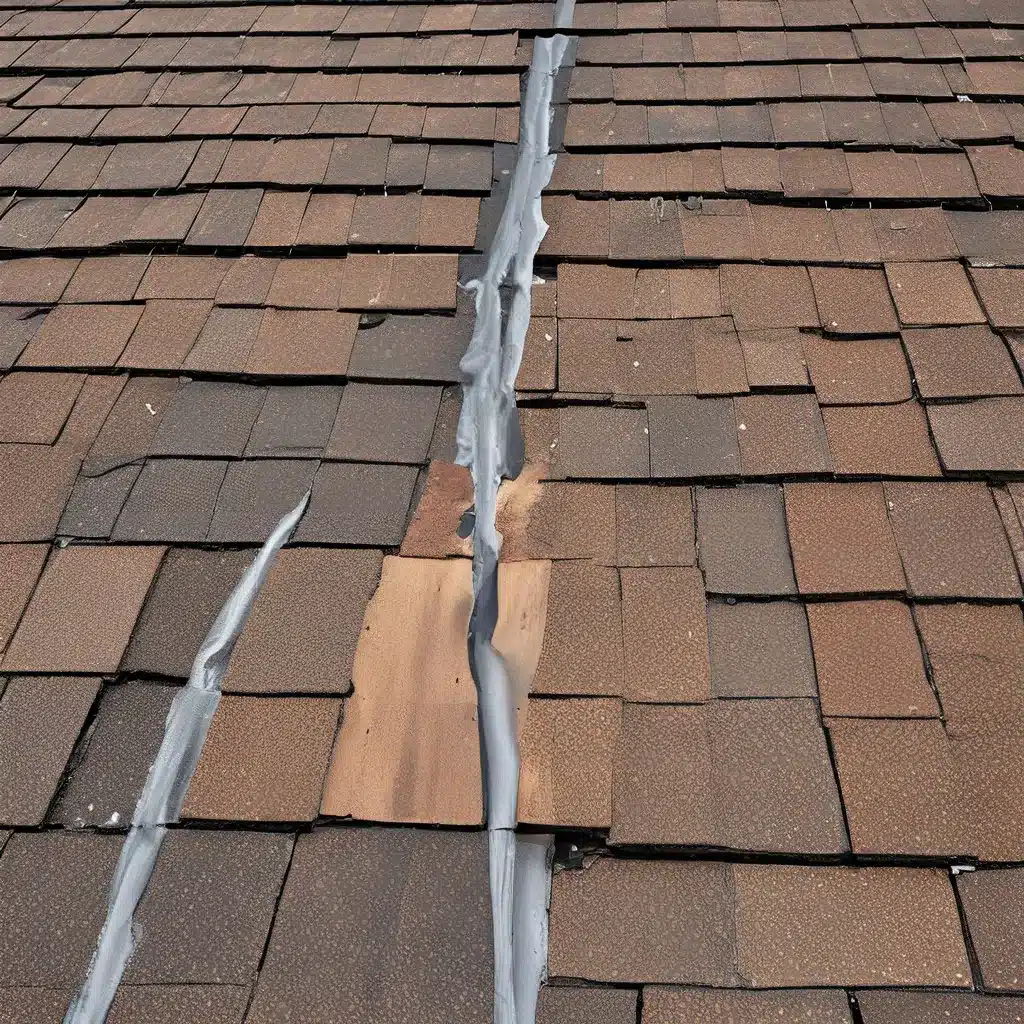
It’s happened to all of us – you notice a small, damp spot on the ceiling, and before you know it, you’ve got a full-blown leak on your hands. Roof leaks can be one of the most frustrating and elusive home repairs, leaving you scratching your head and wondering, “Where on earth is this water coming from?” Well, my friends, fear not, because I’m here to share my secrets for tracking down those pesky leaks and putting an end to the dripping once and for all.
Investigating the Leak
First things first, let’s get to the bottom of where this leak is coming from. Now, I know you’ve already called in the cavalry – those roofing experts who just couldn’t seem to find the source of the problem. But don’t lose hope! There are a few tricks up my sleeve that might just do the trick.
One of the first things I like to do is take a close look at the flashing around any chimneys, vents, or pipes on the roof. These are common trouble spots where water can sneak in, and they’re often easy to overlook. I’ll carefully inspect the flashing for any cracks, gaps, or signs of wear and tear. If I spot anything suspicious, I’ll make a note to come back and give that area some extra attention.
Next, I’ll turn my sights to the gutters. Clogged or overflowing gutters can actually cause water to spill back into the roof, finding its way inside through small gaps or holes. I’ll make sure the gutters are clean and flowing freely, and I’ll also check the connection between the gutters and the roof – that’s another spot where leaks can often occur.
If the gutters and flashing all seem to be in good shape, I might turn to a trusty borescope to get a closer look. These little inspection cameras allow me to make small holes in the walls or ceiling and take a peek at what’s going on behind the scenes. I can use it to trace the water’s path and hopefully zero in on the source.
Tracing the Leak
Okay, so I’ve done my initial investigation, and I think I might have an idea of where the leak is coming from. Now it’s time to put on my detective hat and really start tracing that drippy trail.
One of the most helpful tools in my arsenal is a moisture meter. This little gadget allows me to test the moisture content of different surfaces, which can be a dead giveaway when it comes to locating the source of a leak. I’ll start at the ceiling where the leak is visible and work my way up, checking the insulation and the underside of the roof decking for any damp spots.
If the moisture meter isn’t giving me the answers I need, I might try a good old-fashioned paper towel trick. I’ll strategically place some paper towels in the areas I suspect the leak is coming from, then wait for the next rainstorm to see if they get wet. Even if the towels have dried out by the time I check them, the color and texture will give me some clues about where the water is coming from.
And let’s not forget about those trusty roofers I mentioned earlier. Just because they couldn’t find the source of the leak on their first visit doesn’t mean they’re completely out of the picture. I might give them a call back and see if they have any other tricks up their sleeves, or if they’re willing to take another look with a fresh set of eyes.
Stopping the Leak
Alright, we’ve done the detective work, and now it’s time to take action. I’ve got a pretty good idea of where that pesky leak is coming from, so it’s time to get to work on stopping it in its tracks.
If the issue is with the flashing, I’ll likely need to call in a professional roofer to make the necessary repairs. Flashing can be tricky, and it’s important to get it right to ensure a proper seal. A qualified roofer will know exactly what to do.
On the other hand, if the leak is coming from a faulty faucet or showerhead, I can probably tackle that one myself. A quick trip to the hardware store and a little DIY know-how can go a long way in fixing those types of leaks. I’ll make sure to replace any worn washers or gaskets and use some plumber’s tape to secure the connections.
And let’s not forget about those gutters. If they’re the culprit, a good cleaning and a little maintenance should do the trick. I might even consider upgrading to some gutter guards to prevent future clogs and overflows.
Wrapping It Up
At the end of the day, tracking down and fixing a roof leak can be a real headache, but it’s also an incredibly satisfying feeling when you finally get to the bottom of it. With a little persistence, the right tools, and maybe a call to the professionals, I’m confident that you can put an end to that annoying drip and keep your home high and dry.
Remember, roof leaks can happen to anyone, and it’s not a sign of failure – it’s just a normal part of home ownership. The key is to stay vigilant, do your research, and not be afraid to try a few different approaches until you find the solution that works for you.
So, the next time you spot that telltale water stain on the ceiling, don’t panic. Grab your borescope, your moisture meter, and your best problem-solving skills, and get to work. With a little elbow grease and a whole lot of determination, you’ll have that leak under control in no time.